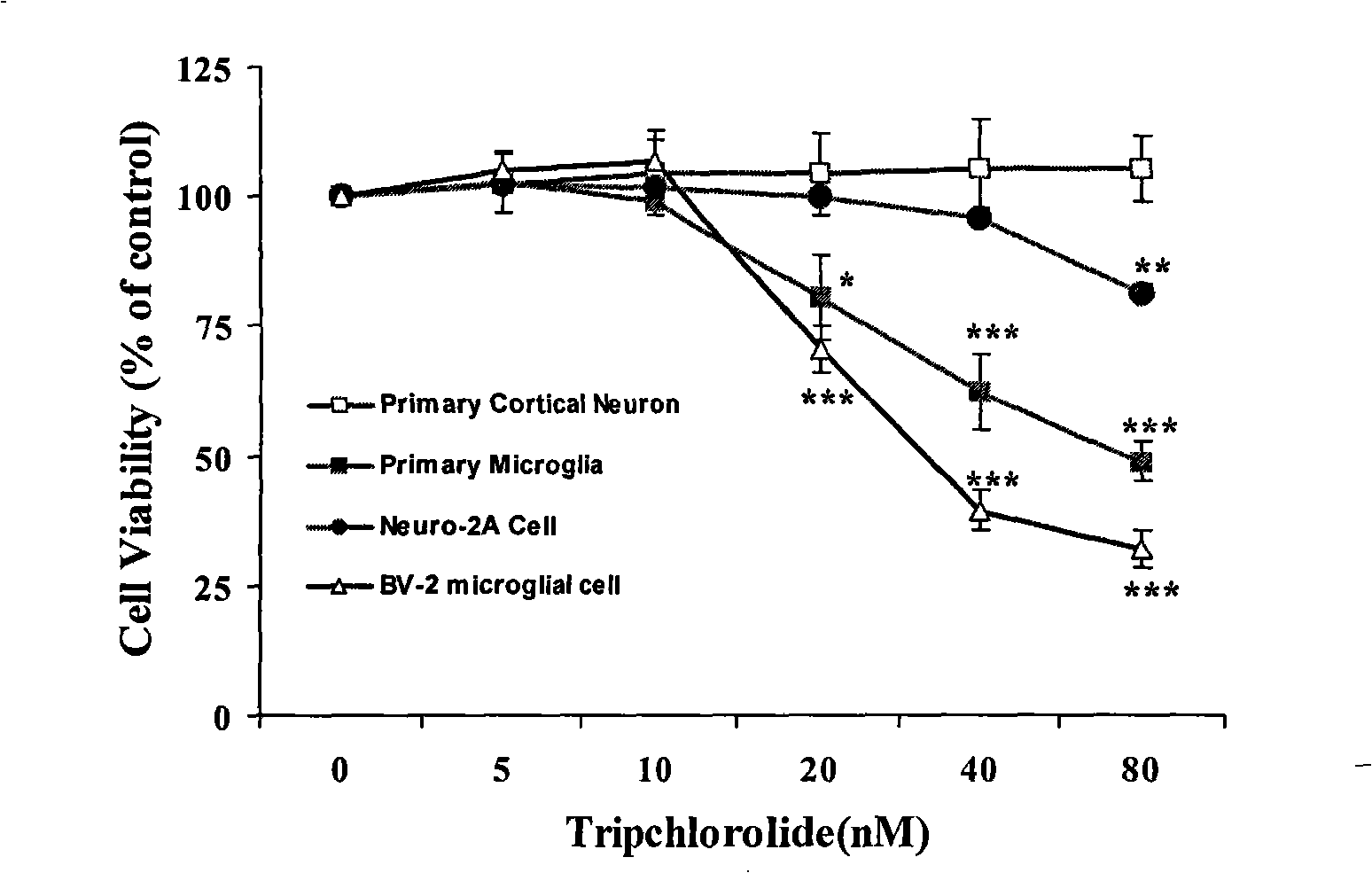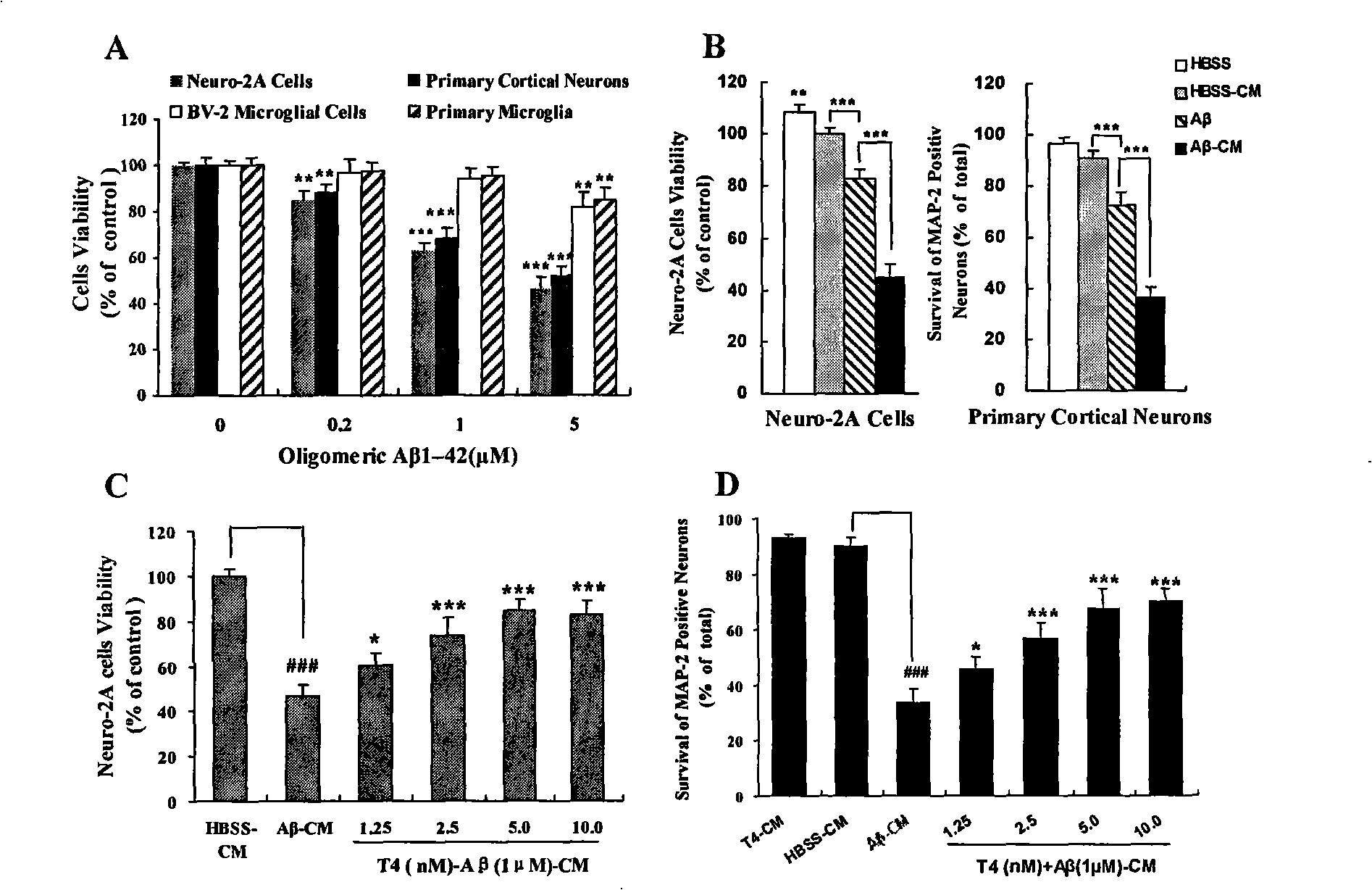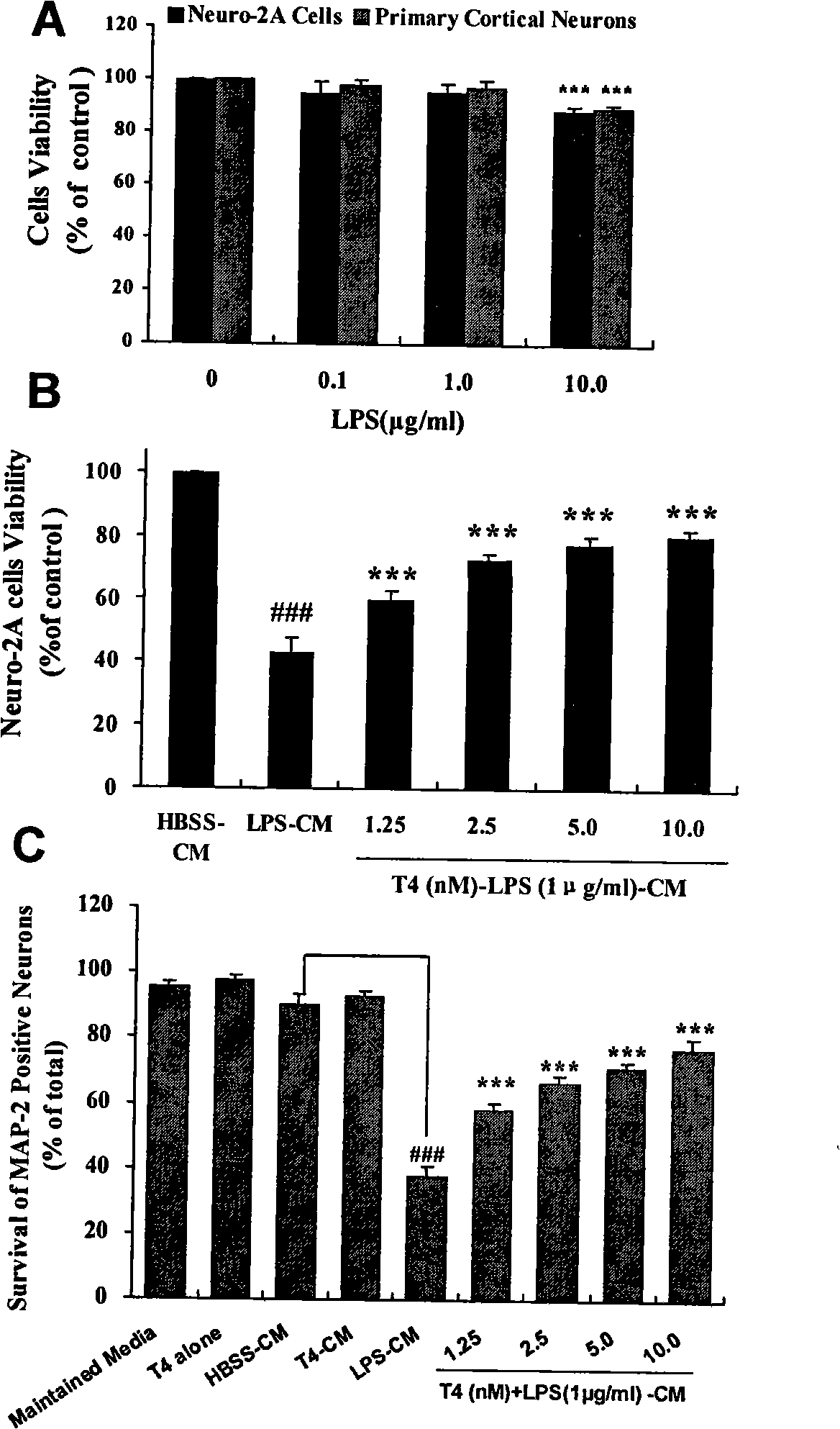New use of tripchlorolide,T4
A technology of chloractone and tripterygium, which is applied in the new field of application of tripterygium chloracterol T4, can solve the problems of high toxicity of crude extracts and limited clinical application, achieve high development and application value, and reduce the number of neurons The damage, the effect of protecting survival
- Summary
- Abstract
- Description
- Claims
- Application Information
AI Technical Summary
Problems solved by technology
Method used
Image
Examples
Embodiment 1
[0029] Embodiment 1. Tripterygium Chlorolactone T 4 Effects on neuronal and microglial survival
[0030] method:
[0031] MTT reduction method detection
[0032] (1) Neruo-2A cells, BV-2 cells, and primary microglia were inoculated in a 96-well culture plate, and 100 μl (1×10 4 cells / well), the cells can be used for drug intervention after attachment; the primary mouse cortical neuron cells are 100 μl per well (initial inoculation 1×10 5 cells / well), on the 6th day of in vitro culture for drug intervention.
[0033] (2) Different concentrations (0, 5, 10, 20, 40, 80nM) of triptolide T 4 After acting for 48 hours, 10 μl of 5 mg / ml MTT solution was added to each well, and incubated at 37° C. for 4 hours.
[0034] (3) Add stop solution (containing 10% SDS, 5% isopropanol, 0.012N hydrochloric acid) to terminate the culture, and incubate overnight at 37°C.
[0035] (4) The next day, measure the OD570 value of each well with a 570nm wavelength with a microplate instrument, and...
Embodiment 2
[0040] Embodiment 2. Tripterygium chloractone T 4 Alleviate oligomeric Aβ 1-42 / LPS-induced glial-inflammatory response to neuronal toxic damage
[0041] method:
[0042] 1. MTT reduction method detection: the specific operation method is the same as the MTT reduction method detection described in Example 1.
[0043] 2. Immunofluorescence Cytochemistry
[0044] (1) Primary cortical neurons cultured in vitro on day 6 were fixed with 4% paraformaldehyde at room temperature for 30 min;
[0045] (2) Remove the fixative, wash with PBS three times, each time for 3 minutes;
[0046] (3) Block with TBSTx containing 5% BSA for 60 min, and shake gently on a shaker;
[0047] (4) Remove the blocking solution, incubate with anti-MAP-2 antibody (1:1000) diluted in TBSTx containing 5% BSA, overnight at 4°C;
[0048] (5) Remove the primary antibody diluent, wash with TBSTx three times, each time for 5 minutes, and shake gently on the shaker;
[0049] (6) Remove the washing solution, ad...
Embodiment 3
[0062] Example 3. Tripterygium Chlorolactone T 4 oligomeric Aβ 1-42 Activated microglia produced effects on the levels of inflammatory mediators (TNF-α, IL-1β, PGE2 and NO).
[0063] method:
[0064] 1. Cell culture supernatant TNF-α, IL-1β and PGE 2 Determination of products
[0065] triptolide T 4 Treat for 60min and then use Aβ 1-42 Stimulate for 24h to detect TNF-α, PGE 2 , or stimulated for 3h for the detection of IL-1β. The supernatant was collected after centrifugation and stored at -80°C if not detected immediately. Mouse TNF-α, IL-1β were detected by ELISA kit (purchased from BioSource Company), supernatant PGE 2 Detected by EIA kit (purchased from Cayman Company). The operating procedure was according to the kit instructions.
[0066] 2. Determination of NO metabolite nitrite
[0067] Triptolide T 4 Treat for 60min and then use Aβ 1-42 After being stimulated for 24 hours, the supernatant aspirated after centrifugation was used to detect the extracellular...
PUM
 Login to View More
Login to View More Abstract
Description
Claims
Application Information
 Login to View More
Login to View More - R&D
- Intellectual Property
- Life Sciences
- Materials
- Tech Scout
- Unparalleled Data Quality
- Higher Quality Content
- 60% Fewer Hallucinations
Browse by: Latest US Patents, China's latest patents, Technical Efficacy Thesaurus, Application Domain, Technology Topic, Popular Technical Reports.
© 2025 PatSnap. All rights reserved.Legal|Privacy policy|Modern Slavery Act Transparency Statement|Sitemap|About US| Contact US: help@patsnap.com



